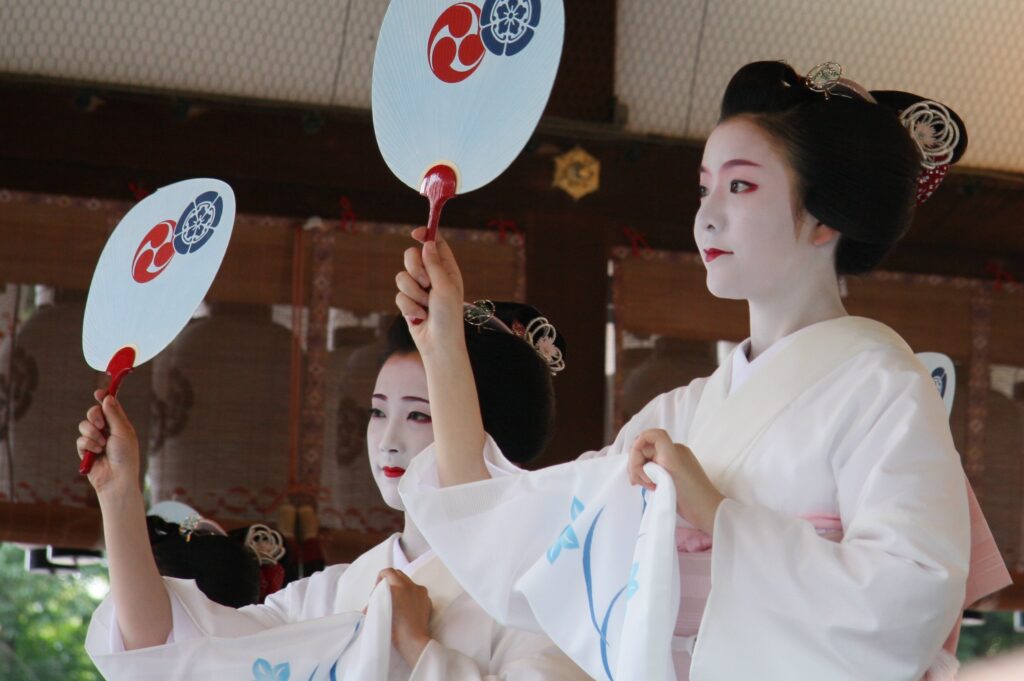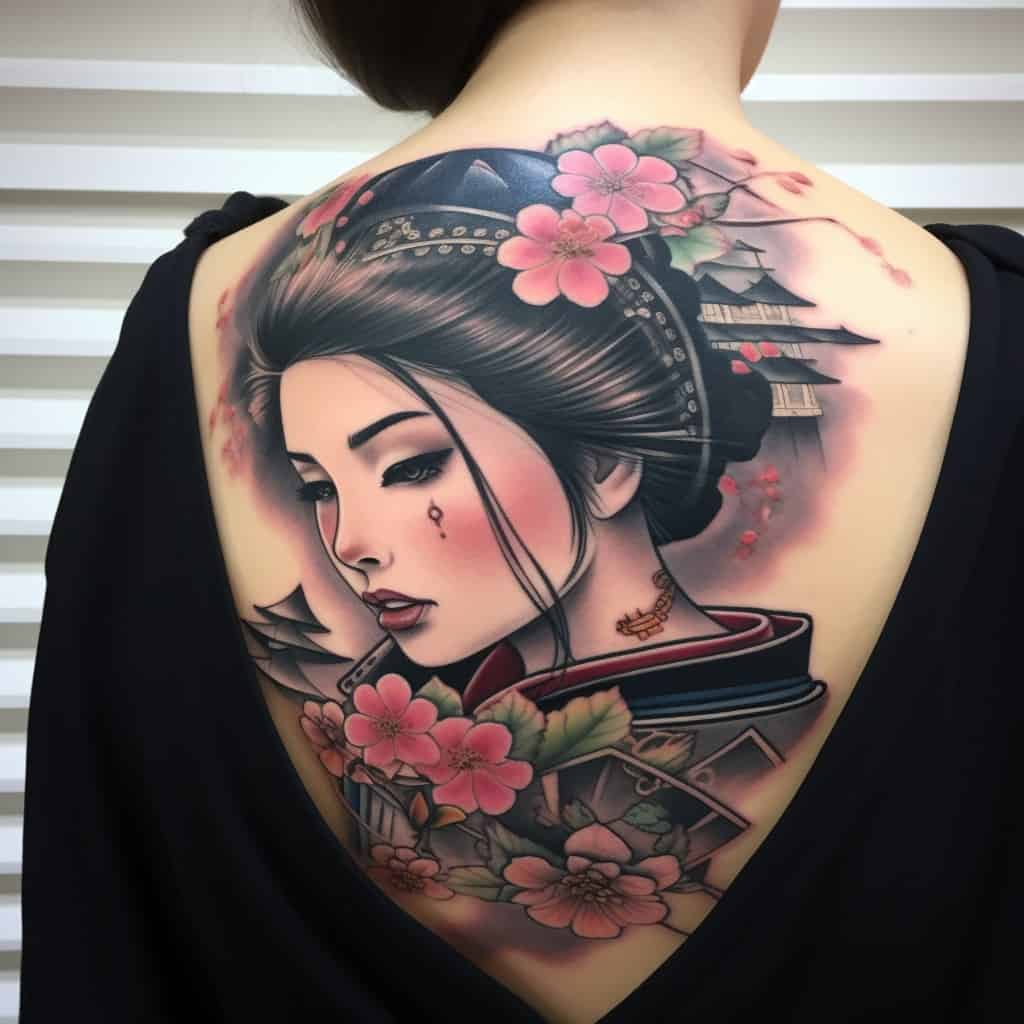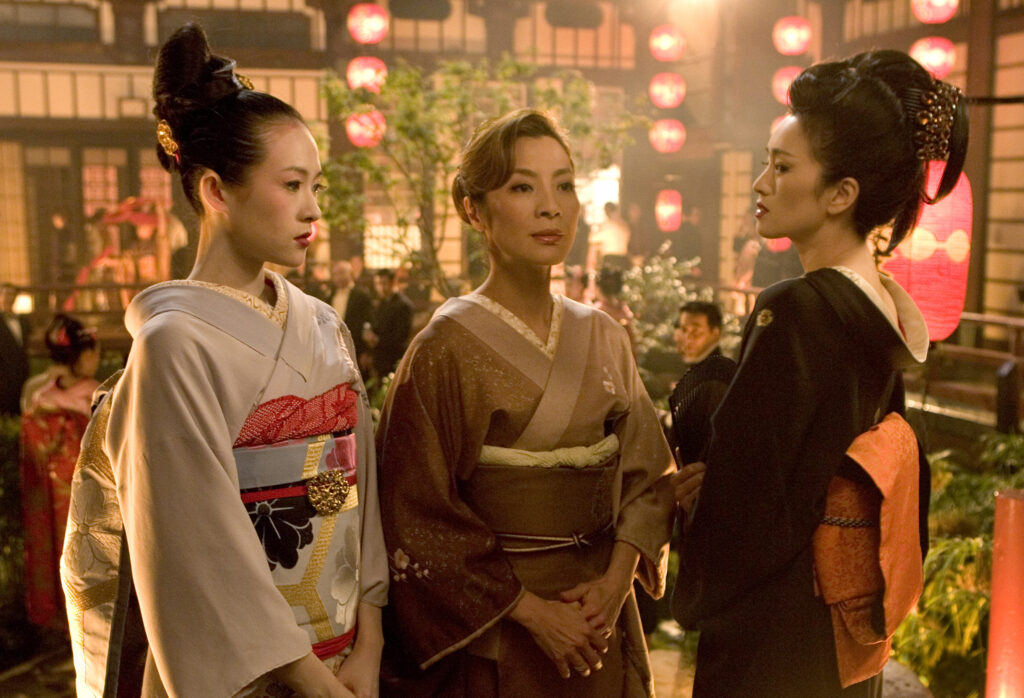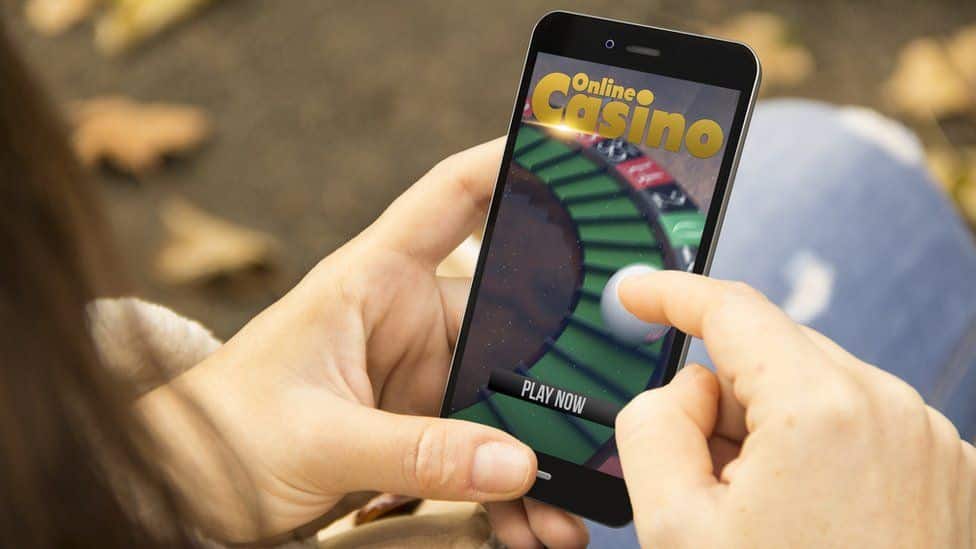The geisha, often referred to as the “performing artist” or “artisan,” are iconic figures in Japanese culture. These enigmatic women have fascinated the world with their unique beauty, grace, and discipline. In this comprehensive article, we delve into the rich history and traditions of the geisha, debunking common myths along the way.

The Geisha: Masters of Traditional Entertainment
What is a Geisha? A geisha, or “geiko” in western Japan, is a highly skilled female entertainer trained in various forms of traditional arts. They are often hired to entertain predominantly male guests during banquets, parties, and other occasions. Geishas showcase their talents through activities such as dancing to the melodious tune of a shamisen (a traditional Japanese stringed instrument), engaging in meaningful conversation, and initiating games. These encounters usually take place in exclusive settings like “ochaya” (tea houses) or “ryōtei” (traditional Japanese restaurants), where guests are charged by the hour.
History of Geisha The history of geisha dates back to the pleasure quarters of Japan before the 18th century. Surprisingly, the earliest geishas were men known as “taikomochi” or “hōkan.” These male geishas initially served feudal lords, providing entertainment and even military advice. As time passed, female geishas, known as “geiko” in Kyoto, emerged, along with teenage “odoriko” or dancing girls.
During the 17th century, geishas evolved into pure entertainers, and their roles became exclusively female. Oiran, high-ranking courtesans, were distinct from geishas in Japanese history. Oiran were known for their exclusivity, servicing upper clientele at exorbitant prices. However, the rise of geishas marked the decline of oiran, culminating in the outlawing of prostitution in Japan in 1956.
Is an Oiran a Geisha? No, oiran and geisha are not the same. Oiran were high-ranking courtesans with different social status and exclusivity compared to geishas. The oiran gradually lost demand as geishas gained popularity for their modern demeanor and skilled entertainment.

Geisha Today: A Tradition in Decline
Current Number The tradition of geisha is dwindling due to its exclusivity, high cost, and adherence to tradition. The heart of geisha culture still beats strongest in Kyoto, particularly in the five “hanamachi” or geisha districts: Gion Kōbu, Ponto-chō, Kamishichiken, Gion Higashi, and Miyagawa-chō. In recent years, there have been about 1,000 to 2,000 geishas in Japan, with approximately 300 in Kyoto alone. Exact numbers in other areas remain unknown to outsiders.
Foreigner or Non-Japanese Geisha To adapt to changing times, some “okiya” (geisha houses) have started accepting foreign nationals as geishas. This move signifies a departure from tradition, as traditionally, geishas were Japanese women. While this change is relatively recent, it reflects a broader shift in the geisha world.

How to Become a Geisha
Maiko Training A maiko, or “dancing child,” is an apprentice geisha. Traditionally, maiko began training at a young age, but today, they start at around 15 to 18 years old. Aspiring geishas may choose to start as maikos or proceed directly to become full-fledged geishas. Regardless of the path, they undergo rigorous training in the arts before debuting as skilled entertainers.

How to Identify Geisha & Maiko
Age Geishas are typically older than maikos, who start their training at a younger age. This age distinction helps distinguish between the two.
Makeup Both geishas and maikos wear distinctive makeup, characterized by a pale face with red and black accents. Maikos, however, have more elaborate and colorful makeup.
Hair The hairstyle also differs, with maikos sporting more intricate and ornate hairstyles compared to geishas.
Outfit & Footwear Both geishas and maikos wear traditional kimonos, but maikos tend to have more vibrant and elaborate outfits. Their footwear choices also vary.
How to Spot Fake a Maiko and Geisha
Spotting a genuine geisha or maiko can be challenging, especially for newcomers to the culture. Inexperienced individuals may fall prey to imitation or misrepresentation. This section provides valuable insights into identifying real geishas and maikos.
Where to Find and Meet Geisha?
Ochaya and Ryōtei Meeting a geisha or maiko in Japan traditionally requires access to exclusive establishments like “ochaya” (tea houses) or “ryōtei” (traditional Japanese restaurants). These venues usually cater to regular or trusted customers, making it challenging for newcomers to arrange encounters.
Partnered Travel Agencies and Hotels In recent years, some ochaya have relaxed their restrictions, allowing tourists to experience geisha dinners through partnered travel agencies and hotels. While this eases accessibility, such experiences can still be costly, with dinner expenses ranging from 50,000 yen ($470~) per geisha or maiko.
Language Barrier Language can be a barrier when interacting with geishas and maikos, as they typically do not converse in English. Visitors without Japanese language skills may need to hire interpreters to enhance their experience.

Top Myths About Geisha
Throughout the years, misconceptions about geisha culture have proliferated, fueled in part by Hollywood portrayals. In this section, we debunk common myths to provide a clearer understanding of the geisha profession.
Geisha tattoo

A geisha tattoo is a tattoo that features imagery related to geishas, traditional female entertainers in Japanese culture. Geisha tattoos often incorporate various elements associated with geishas, such as their elaborate hairstyles, traditional kimonos, fans, musical instruments like shamisens, and other symbolic items. These tattoos are typically rich in detail and can be quite intricate, showcasing the artistry and craftsmanship of the tattoo artist.
Geisha tattoos can carry various meanings and symbolism, depending on the individual’s perspective and the specific elements included in the design. Some possible meanings and themes associated with geisha tattoos include:
- Beauty and Elegance: Geishas are often seen as symbols of beauty, grace, and refinement. A geisha tattoo may represent an appreciation for these qualities.
- Femininity and Empowerment: Geishas, despite historical misconceptions, were skilled and empowered women in their own right. Some people may get geisha tattoos to celebrate feminine strength and resilience.
- Japanese Culture and Tradition: Geisha tattoos can be a way to show an affinity for Japanese culture and a love for its traditional arts and customs.
- Mystery and Intrigue: Geishas have an aura of mystique and secrecy surrounding their world. A geisha tattoo can evoke a sense of intrigue and curiosity.
- Artistry and Craftsmanship: Geisha tattoos often require a high level of artistry from the tattoo artist due to the intricate details involved. They can serve as a showcase of the artist’s skills.

It’s important to note that getting a geisha tattoo, like any tattoo, is a personal choice, and the meaning can vary from person to person. Some people may choose geisha tattoos solely for their aesthetic appeal, while others may have deeper cultural or personal connections to the imagery. If you’re considering getting a geisha tattoo, it’s advisable to work with a skilled tattoo artist who specializes in detailed and intricate designs to ensure a visually appealing and meaningful result.
Memoirs of a geisha

“Memoirs of a Geisha” is a novel written by Arthur Golden, first published in 1997. The book is a work of historical fiction that tells the story of a young Japanese girl named Chiyo who becomes a geisha in Kyoto, Japan, during the early 20th century. The novel is presented as the fictional memoirs of a geisha named Sayuri, with Chiyo’s journey to becoming Sayuri as the central narrative.
The story follows Chiyo’s life from her early years as a poor fisherman’s daughter to her transformation into a geisha trained in traditional arts such as dance, music, and conversation. The novel provides a detailed and often romanticized portrayal of the geisha culture, their training, and the intricacies of their world.
“Memoirs of a Geisha” explores themes of love, sacrifice, ambition, and the challenges faced by women in a society with strict gender roles. It gained widespread acclaim for its vivid descriptions, rich character development, and immersive storytelling.
The novel was later adapted into a film in 2005, directed by Rob Marshall, with actress Zhang Ziyi portraying the main character, Sayuri. While the book and the film have been praised for their storytelling and visual beauty, they have also faced criticism for some inaccuracies and simplifications of geisha culture and history. Nonetheless, “Memoirs of a Geisha” remains a popular work of fiction that has introduced many readers and viewers to the world of geisha in Japan.
10 Questions and Answers About Geisha & Maiko
- Q: What is the origin of the term “geisha”? A: The term “geisha” translates to “performing artist” or “artisan” in English.
- Q: What is the difference between “geiko” and “geisha”? A: In western Japan, geishas are referred to as “geiko.”
- Q: How do geishas entertain their guests? A: Geishas entertain guests through various activities such as dancing, initiating games, and engaging in conversation.
- Q: What is the history of geishas? A: Geishas originated in the 18th century, with the first geishas being men who served feudal lords.
- Q: Are oiran and geisha the same? A: No, oiran and geisha are distinct. Oiran were high-ranking courtesans, while geishas were skilled entertainers.
- Q: Why is the geisha tradition declining? A: The geisha tradition is declining due to its exclusivity, high cost, and adherence to tradition.
- Q: Can foreigners become geishas? A: Some okiya have started accepting foreign nationals as geishas in recent years.
- Q: What is a maiko? A: A maiko is an apprentice geisha who undergoes rigorous training in traditional arts.
- Q: How can you identify a geisha or maiko? A: Geishas and maikos can be identified by their age, makeup, hairstyle, outfit, and footwear.
- Q: Where can you find and meet geishas in Japan? A: Geishas can be found in exclusive establishments like ochaya and ryōtei. Tourists can also access geisha dinners through partnered travel agencies and hotels.






